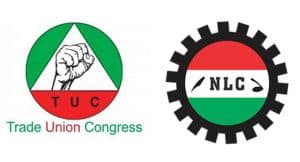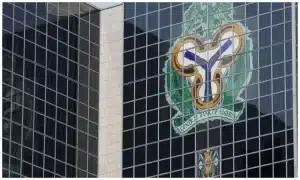Unlocking the Secrets of Loss and Damage Funds: What You Need to Know
By Adeyemi Adekunle

Loss and damage funds are a little-known but vital part of the Paris Agreement. Designed to help countries cope with the effects of climate change, these funds provide financial aid to countries that have been hit badly by natural catastrophes.
But how do loss and damage funds work? What are the benefits of these funds? And what could they mean for the future of climate change?
What Are Loss and Damage Funds?
Loss and damage funds are an important part of the UN Framework Convention on Climate Change (UNFCCC). They were created to help developing countries deal with the effects of a changing climate that they cannot adapt to or prevent.
The loss and damage funds are financed by developed countries, and they help to pay for things like food, water, shelter, health care, and education. They also help to rebuild the infrastructure that has been destroyed by extreme weather events.
How Do Loss and Damage Funds Work?
The loss and damage (L&D) fund is a key part of the UN Framework Convention on Climate Change (UNFCCC), and it’s there to help countries affected by climate change. But what does that mean, and how do these funds work?
Essentially, the L&D fund is used to help countries that have been impacted by climate change. This can include things like loss of life, damage to infrastructure, and reduced economic productivity. The fund is financed by both developed and developing countries, and it’s managed by the UNFCCC Secretariat.
How do you qualify for assistance from the L&D fund? Well, that’s a bit more complicated. It depends on several factors, including the type of damage suffered, the extent of the damage, and the capacity of the country to pay for repairs.
What Types of Losses Are Covered by Loss and Damage Funds?
The types of losses that are covered by loss and damage funds are climate-related, which can include events such as floods, storms, and droughts. They can also include impacts from sea-level rise and extreme weather events.
But it’s not just natural disasters that are covered. Loss and damage funds can also help cover the costs of things like displacement, damage to infrastructure, and loss of livelihood. In other words, they can assist with a wide range of adverse effects that are a result of climate change.
The Importance of Loss and Damage Funds
The loss and damage funds are set up to provide financial support for countries and people who are particularly vulnerable to climate change, and who may not have the ability to recover from natural disasters or climate-related events. This is an important step in helping vulnerable countries manage the impacts of climate change, but it is also vitally important to ensure that these funds are managed properly and with accountability.
That’s why it’s important to know what the criteria for receiving funds will be, and where the funds are coming from. The criteria should be clear and specific so that it’s easier for those seeking assistance to understand what kind of support they can expect, as well as what kind of documentation will be needed to apply. In addition, it’s important to understand where the funds are coming from to ensure they are being managed responsibly.
Who Administers the Loss and Damage Funds?
Have you ever wondered who’s responsible for running and administering the loss and damage fund? The short answer is that this role is currently exploring different models, with the UNFCCC having provided elements to consider.
Firstly, the administration of the funds should have strong external accountability, which means that those involved in running the funds should be required to report on their activities.
Secondly, independent external monitoring of how funds are being spent is also important to ensure that money is used as intended and not misappropriated or fraudulently diverted. Additionally, it’s important to ensure there are procedures in place to investigate any reports of non-compliance.
Finally, there should be an oversight mechanism that ensures effective governance of the funds, as well as ensures adequate involvement of those particularly vulnerable to climate change. These considerations need careful attention if we’re going to make sure that this money is put to its most effective use!
Are There Funds Available for Loss and Damage in Your Area?
So you’re wondering if there might be any loss and damage funds in your area. Well, the African continent is at the forefront of the UN’s commitment to providing support to countries affected by drastic climate change.
In 2019, the UN announced its loss and damage fund, which will be disbursed to countries in need. However, only a few African countries have been identified as beneficiaries so far.
While this is a great step in responding to climate-related losses, there is still a lot of work to be done to ensure that such funds are available for loss and damage in all African countries in the future. The fund should also be able to respond more quickly when disasters occur, so that affected countries can begin rebuilding sooner.
So, what do you need to know about loss and damage funds? The key points to remember are:
-Loss and damage funds are an important part of the climate change negotiations, but they’re not well understood.
-The funds are intended to help countries cope with the effects of climate change that have already happened.
-The funds are controversial, and some countries don’t want to pay into them.
-The negotiations on loss and damage are ongoing, and there have been some recent developments.

A Nigerian trained investigative journalist, who cover various news beats in Nigeria.








